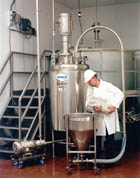
A chemist by training and chemical engineer in practice, Farr served as an expert in fats and oils with Kraft Foods until four years ago, when he joined De Smet Process & Technology Inc., Marietta, GA. Earlier, he began experimenting with alternatives to chemical processing of soybean oil, conducting bench-top experiments that applied high-shear instead of acids and caustics as part of the extraction process.
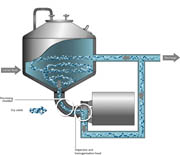
"The only bench-top high-shear mixer available at the time was a heavy-duty Waring blender," Farr says of his early experiments. "I used it for years and was getting very good results, provided the crude oil going in was very good quality." Unfortunately, poor crops are as inevitable as good ones, and Farr tried a number of high-shear units before applying what he describes as an ultra-shear mixer: a machine capable of applying 100,000 reciprocal seconds of shear force.
"When I began using a three-stage rotor-stator assembly from IKA Works, I started to get dramatically better results, but this was bench-top, not commercial scale," he recalls. He worked with Michael Janssen and engineers at IKA's Wilmington, NC, shop to devise a process using a pre-stage mixer as an alternative to acids to hydrate phosphatides in the bean, then a second mixer instead of caustic to remove free fatty acids before the oil enters the deodorizer, where vacuum steam distillation is applied to remove volatile compounds. If bean quality is low, some caustic may be necessary upstream of the deodorizer, resulting in "semi-physical refining," Farr explains. Still, chemical use is significantly reduced, and the process results in "dramatically improved yields," he says. "It's difficult to define, but in a large refinery, even a one percent yield improvement can be worth millions of dollars a year."
Though he retired from De Smet and established his own consultancy in Olive Branch, MS, a year ago, Farr continues working closely with the firm and IKA to implement his process. An Illinois-based edible oils facility deployed the process four years ago, and Mexico's first greenfield plants in 30 years are "operating very well" with the system, he says. A processing facility being built in Alexandria, Egypt, also will utilize physical extraction, and he anticipates retrofitting existing plants.
Optimizing the system is how Farr and other specialists make their livings, but essentially the trade-off is high-shear for chemicals. "It's impossible to get too much shear," says Farr.

Less is more
The more shear, the merrier is true with oils and most food-mixing applications, but a point can be reached where increased shear is counterproductive. Rob Lanham, general manager of Ross Systems and Controls in Savannah, GA, recently worked with a processor who crossed a threshold where a gravy began thickening as more shear was applied. "The more shear they put in, the more heat was generated," says Lanham, theorizing the dynamics broached a point where the mixture entered a transition phase.Tip speed and particle-size reduction are only two of many variables of interest to controls experts such as Lanham. How much vacuum to pull and when to de-aerate, where to set product temperature and when to accelerate or decelerate mixing speed become more important as the complexity of the mixture increases. Recipe-driven PLC controls are critical if multiple variables are to be managed consistently from batch to batch, and the affordability of those controls is within reach of most food processors, Lanham points out.
"Ten years ago a variable frequency, 150 HP drive cost $100,000," he says. "Today, it's in the $7,000 to $15,000 range."
From a mixer-maker perspective, however, the mantra is higher shear. If it can be delivered in-line, so much the better, notes Doug Cohen, technical director in the mixer division of Charles Ross & Son Co., Hauppauge, NY. That has been the evolution for Ross's SLIM (Solid/Liquid Injection Manifold) powder induction technology. The mixer uses high vacuum to convert powders to a mist-like stream that immediately disperses when injected into a high-velocity liquid stream. A batch version debuted in the late 1990s, and Ross now is optimizing an in-line version with more vacuum and shear.
SLIM is applicable for processes in which agglomeration is an issue, such as the introduction of gums and other thickening agents to a product. For broader applications, the company offers MegaShear, a rotor-stator design capable of achieving sub-micron emulsions. Tip speeds of up to 12,000 feet per minute are achieved, triple the speed of the previous generation of mixers, Cohen says. In some food applications, high-shear rotor stator assemblies have replaced pressurized homogenizers. "Anytime you can move an application from homogenization to rotor stator, you have done the customer a service," he maintains.
"Going to extreme shear levels is the trend in mixing," agrees Lou Beaudette, president of Manchester, NH-based Admix Inc. "We're approaching the capabilities of the pressurized homogenizer. Eventually, processors will be able to mill whole pieces of fruit or vegetable to maximize the yield. Finding the right design that can handle the skins as easily as the pulp still remains to be done, but we are on the verge of extreme milling machines."
Admix offers a range of units for different processing jobs, with the Boston Shear Mill topping the roster for extreme shear force. Particle reductions down to one micron for softer materials are possible. The in-line mixer also is appropriate for creating emulsions, according to Beaudette. Particle sizes that only were possible with a high-pressure homogenizer five years ago can now be handled by the shear mill but with less energy and maintenance requirements and more throughput, he says.
For some products, plant operators will combine a high-shear mixer with a homogenizer, relying on the rotor stator assembly to reduce particles to a size that the homogenizer can handle while also reducing maintenance requirements. Beaudette says his Boston Shear Mill can process viscosities of up to 50,000 centi-Poise (c-P), the thickness of ketchup at room temperature. At 25
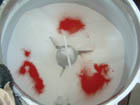
Better batching
The Breddo Likwifier is a seminal example of high-shear mixing in the food industry. A workhorse in batch mixing and blending, the Likwifier is undergoing retooling to keep it in step with the changing nature of food engineering.Over the years, some users have retrofitted their units to blend, cook and chill ingredients. Relying on in-house engineers, manufacturers jacketed the bowls and added the plumbing necessary to create de facto heat exchangers. By introducing hot water or steam, the Likwifier cooks a batch while blending is done. Flushing the unit and then introducing chilled water returns product to ambient temperature or lower.
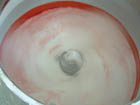

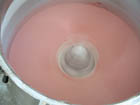
"When you're asking for products to be finitely mixed, you have to use this kind of technology," he adds. "Stratification is eliminated and product uniformity is improved."

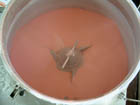
For more information:
Lou Beaudette, Admix Inc.,
800-466-2369
Bill Wade, American Ingredients Co.,
816-561-9050,
sales@aic-breddo.com
Walter Farr, Walter E. Farr & Associates,
770-366-3723,
wef@desmetusa.com
Michael Janssen, IKA Works Inc.,
800-733-3037, ext. 210,
mjanssen@ika.net
Stig Christensen, Invensys APV,
011-458922-8922,
Stig.H.Christensen@invensys.com
William Butch, Motech Manufacturing Company Inc.,
786-229-7607,
butch@mixingtechnologies.com
Doug Cohen, Charles Ross & Son Co.,
800-243-7677
Rob Lanham, Ross Systems and Controls,
912-238-5800
rlanham@mixers.com
